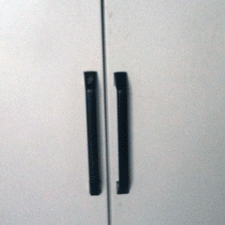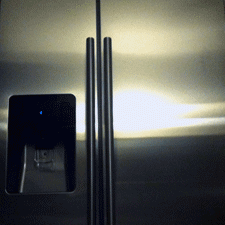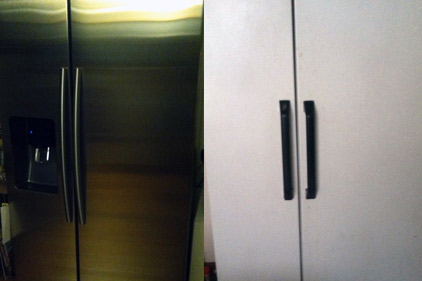Where I live, the electric company operates a refrigerator recycling program. My refrigerator probably came off the line in the early 1980s. It’s been a workhorse, but has seen better days. Time for an upgrade.

|
Apparently, quite a few folks take part in the program. I couldn’t get my old fridge picked up for nearly a week. The new refrigerator was on its way. So, for six days, I had two refrigerators in my kitchen. You can check out some rad images online to make your own judgment, but I don’t think I’m exaggerating when I say that the new appliance makes the old one look like it just got excavated from an archaeological dig. Advances in refrigerator design since the 1980s have been dramatic. The innovative concepts that make up the modern refrigerator left me thinking, why weren’t refrigerators made like this from the start.

|
The best example of an innovative leap between my two refrigerators is the door shelves. As I took mustard and olive jars from the old fridge and placed them in the new one I began to understand at least some of the thought process that must have transpired among appliance designers. The shelves from the old fridge are molded into the door. Each has a metal band that keeps jars and the like in place. The new fridge has deep plastic shelves that can be removed and configured to accommodate a tall wine bottle or a squatty jar of horseradish. Oh, yeah. Right. Of course a person would want to adjust the shelves and remove them for cleaning. Why would we ever want molded, static shelves with a metal face that ultimately threatens us with a rusty scrape each time we reach for a pickle?
We have to start somewhere. Perhaps, 30 years ago, a primary concern for refrigerator door shelf designers was stability. Molding the shelf into the door gave it strength. Then, somewhere along the line, another designer asked, "How can we maintain stability while making the shelves removable?" To some, this may have been asking the impossible. Fast-forward to today. Modern refrigerator door shelves insert downward into fittings and let gravity do the work. I’m certain companies invested in mountains of research to arrive at the current state of refrigerator design. Science, engineering, prototyping. We know they are all part of the product development process we know. However, the idea to use gravity to hold adjustable shelves in place was just that: an idea.
Innovative thought does not have to conceive the absolute best approach for all time. It doesn’t have to leap from 1981 to 2014. Great ideas can be, and often are, incremental . Sometimes though, while you are reviewing your project data, an embarrassingly simple idea comes to you. It may surface while you’re staring into your refrigerator and wondering if that jar of pickled eggs is still any good. And then there it is, the answer staring you in the face.


Recent Comments
Flexible Packaging
eat healthy food